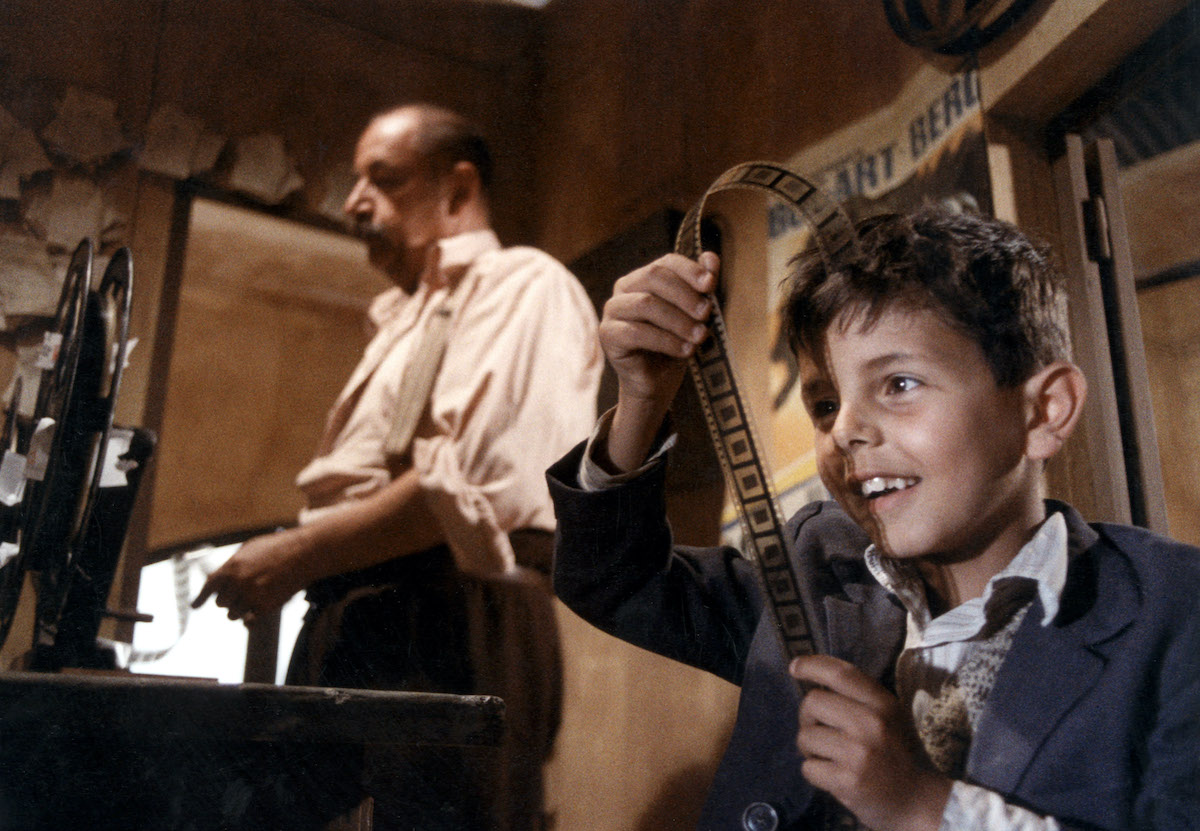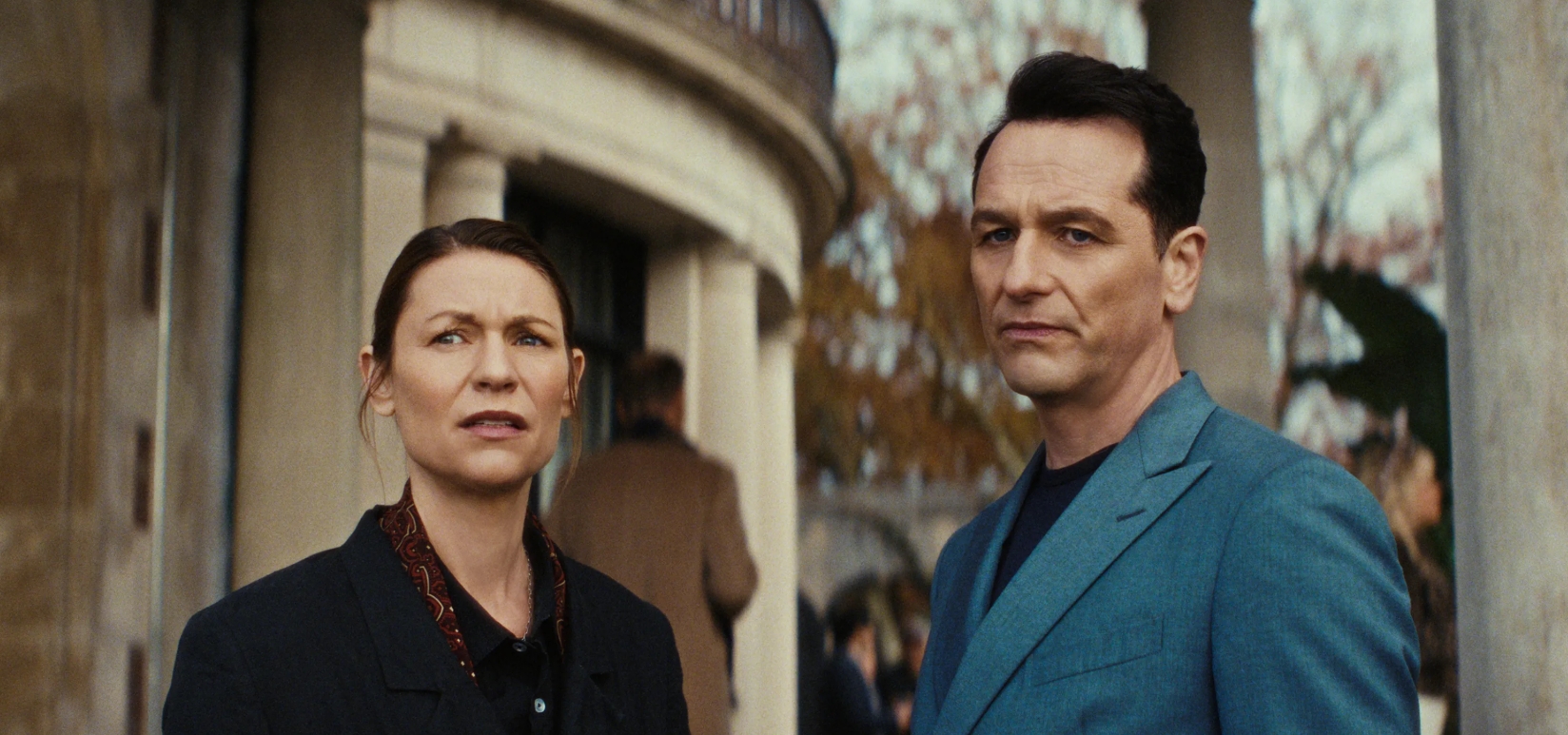‘Cinema Paradiso,’ helmed by Giuseppe Tornatore, remains a timeless tribute to the enchanting impact of film. Released in 1988, this Italian classic has left a lasting mark on viewers worldwide, echoing well past its initial era and location. Fundamentally, ‘Cinema Paradiso’ offers much more than a wistful tale of growing up; it serves as a meaningful tribute to the craft of making films, highlighting cinema’s ability to transform lives, stir feelings, and preserve memories.
The Framework of Metafilm: Film as a Protagonist and Driving Force
Central to ‘Cinema Paradiso’ is the famed projectionist, Alfredo, and his pupil, Salvatore, known as Toto. The narrative traverses several decades, with the Cinema Paradiso theater acting as both a literal and metaphorical heart of the town. Rather than serving as mere backdrop, the cinema itself emerges as a character, integral to the community and the protagonist’s identity.
The theatre transforms into a communal space where social barriers fade away. In lively and personal scenes, locals from diverse walks of life come together, bonded by shared laughter, emotions, and a collective sense of wonder in front of the shimmering screen. Tornatore highlights the community-building and unifying power of cinema, turning the act of watching films into a ritual that bridges age and social differences.
Cinema as Remembrance: The Heartfelt Essence of Nostalgia
‘Cinema Paradiso‘ meticulously weaves memory and longing, employing the conventions of cinema to evoke nostalgia not only for Toto but also for the audience. From the opening sequences that reveal Salvatore as an accomplished filmmaker haunted by his past, to the recurring motif of old film reels and celluloid, the act of remembering becomes synonymous with cinematic watching. The film’s temporal shifts—between Toto’s childhood, adolescence, and adulthood—mirror the way cinema often replays and reframes moments, preserving them against the erosions of time.
A pivotal example is the film’s closing montage, a collection of censored romantic scenes Alfredo had preserved for Toto. This montage operates as an artistic statement; it is both a gift and an act of reclamation, restoring lost kisses and passion to public memory. Such scenes reinforce film as a vessel for emotion that survives even when physical spaces like the cinema itself fade away or are destroyed.
Tribute to Technology: Developing an Expressive Filmic Dialect
Technically, ‘Cinema Paradiso’ is informed by and reverent of classic film idioms. Tornatore imbues the visual storytelling with elements reminiscent of Italian neorealism, employing naturalistic performances and authentic settings. The technical craftsmanship—from Ennio Morricone’s lush, evocative score to the warm, sepia-toned cinematography—serves as a nod to cinema’s history and its profound sensory impact.
Furthermore, the narrative is embedded with a theme of a film inside a film, nodding to masterpieces by filmmakers such as Visconti and Chaplin. Scenes from these movies are displayed on the Paradiso’s screen, providing both a visual lesson and a heartfelt nod to the extensive film tradition. This use of intertextuality anchors the tale in the collective legacy of cinema, honoring the craft of filmmaking and encouraging audiences to engage in a common cultural reminiscence.
Mentorship and Transmission: The Projectionist’s Role
One of the film’s richest layers is its meditation on mentorship and the transmission of cinematic love. Alfredo’s relationship with Toto exemplifies the passing of knowledge, passion, and appreciation for film. By teaching Toto the intricacies of projection—and, implicitly, the beauty of storytelling—Alfredo acts as both craftsman and philosopher. He imparts wisdom that extends beyond the technical, encouraging discovery, courage, and personal growth.
This dynamic mirrors the way film history itself is preserved and passed to new generations. Just as Toto inherits Alfredo’s passion and ultimately surpasses him, so too does cinematic tradition constantly renew itself through fresh eyes and evolving technologies.
Socio-Political Undercurrents: Censorship and Liberation
The movie delves deeply into themes related to restriction. Alfredo receives directives from the local priest to cut out scenes considered inappropriate, mainly those involving romance or sensuality. This repeated editing highlights how institutions attempt to regulate stories and emotions, but passion manages to re-emerge. The reappearance of the deleted scenes at the end underscores the powerful ability of cinema to uphold authenticity, emotion, and spirited happiness.
By highlighting such constraints—alongside the liberating collective experience of moviegoing—’Cinema Paradiso’ comments on film as both a reflection of society and a subtle force for cultural evolution. The act of watching, it suggests, may be transformative, offering glimpses of alternate worlds and emotional truths otherwise inaccessible.
Global Impact and Heritage
The global response to ‘Cinema Paradiso’ highlights its message that resonates with everyone. The movie received significant praise, earning the Academy Award for Best Foreign Language Film in 1990 and the Grand Prix at the Cannes Film Festival. Its influence can be seen in subsequent films; filmmakers like Alfonso Cuarón mention it as an inspiration, and its format is mirrored in movies that delve into themes of memory, nostalgia, and the transformative nature of art.
By blending intimate storytelling with a grand narrative about cinema’s capacity to connect and heal, ‘Cinema Paradiso’ appeals across cultures and generations. Its reverence for film is not merely thematic but embedded in its very form and structure, inviting audiences everywhere to rediscover the magic of moviegoing—the laughter, the heartbreak, and the fleeting moments of transcendence shared in darkness before the glow of light and shadow.
The movie consequently stands as a rich homage, not only to films as a form of art but also to films as shared experiences, places of education, and reflections of human yearning. With this endearing and intricate perspective, ‘Cinema Paradiso’ transforms into the narrative of cinema: a vibrant collection of dreams, ambitions, and the strength of visual narration itself.





